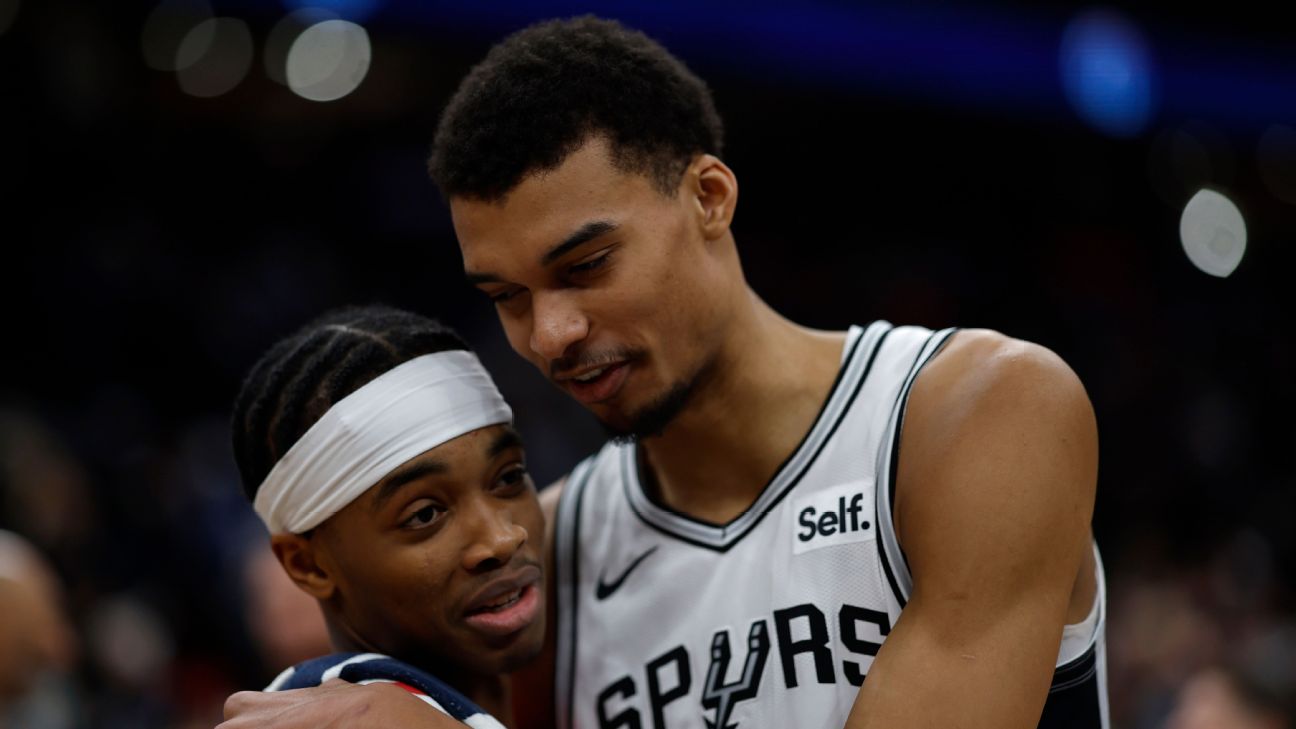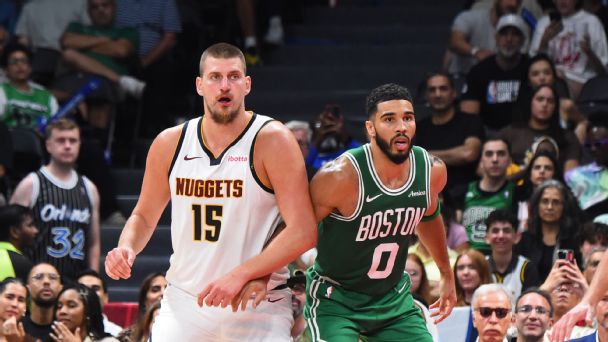Last season’s NBA rookie class was highlighted by the emergence of Victor Wembanyama, who is aiming to fend off an early-season sophomore slump with the San Antonio Spurs.
And while all eyes will be on whether Wembanyama can get the Spurs into playoff contention in a tough Western Conference, there are other second-year players who are making an early season impact. Wembanyama’s draft classmate (and former Metropolitans 92 teammate) Bilal Coulibaly is helping lead a youth movement for the Washington Wizards, while fellow lottery pick Gradey Dick is proving why he should be part of the Toronto Raptors’ future.
On the other hand, the 2024 rookie class has had its share of ups and downs in its first two weeks. Two weeks of games is too early to draw conclusions, but the thought that this year’s draft was the weakest in a decade hasn’t been refuted by on-court results. While higher-profile rookies, including Memphis Grizzlies big man Zach Edey, are finding their footing, there have been a few pleasant surprises — including Edey’s fellow first-year teammate Jaylen Wells.
Here are some early-season trends from three notable NBA sophomores, one surprise rookie, and what to make of the 2024 draft class so far.
Jump to a section:
Wemby’s Year 2 outlook
Wizards leaning on Coulibaly
Dick proving his worth on Raptors
The
Slow start for the 2024 draft class
of his career on Halloween against the Utah Jazz, which came after scoring just six points against the Oklahoma City Thunder, which came after a 14-point, 20-rebound showing in a loss to the Houston Rockets.
The odds are that Wembanyama will get back to, and eventually, raise his usual lofty standards. He can be a streaky shooter due to the number of off-balance and creative attempts he likes to take. Due to his frame, he’s really a perimeter player, not a back-to-the basket big, but there could be more emphasis on getting him easy touches, and less settling on his part (he’s attempted 9.6 jumpers jumpers per game to just 5.1 layups through seven games, per Second Spectrum data). His midrange game should become consistent as he matures, but Wembanyama is so good around the rim at his size that those high-value touches ultimately need to spike. For now, the easy dunks and layups help to counterbalance the tough ones.
How you view his slow start (his 25% on jump shots ranks last among players with at least 50 attempts, per Second Spectrum) revolves around your expectations for San Antonio. The Spurs have the league’s third-youngest roster, and rank in the bottom five of the league in offensive efficiency. Still, it doesn’t mean a big sophomore jump for Wembanyama isn’t coming.
The Spurs will ultimately go as the 20-year-old Wembanyama goes this season. Coach Gregg Popovich’s availability and health are now big-picture concerns. The offseason additions of Chris Paul and Harrison Barnes give them much better structure, although they have not been good offensively so far. San Antonio’s offense has been smartly geared toward putting adequate spacing around Wembanyama, working the ball through him as an outlet, and giving him freedom to create.
Paul’s presence has given Wembanyama more opportunities to work as a screener and attack the middle of the floor. Devin Vassell’s impending return from a foot injury should enhance the spacing around him. It’s also in the Spurs’ best interest to keep developing their younger bench players, including rookie Stephon Castle and 2022 first-round pick Malaki Branham, even if there are growing pains.
It won’t be easy this season for Wembanyama, particularly without a second star to consistently draw attention. Opposing teams have double-teamed him on nine total post-ups this season — second-most in the NBA behind Nikola Jokic, according to Second Spectrum. Of course, there aren’t many other ways to guard Wembanyama — teams are sending pressure, guarding him physically and trying to influence him out of the paint and into tougher attempts. His physical stature and deft footwork give him tremendous advantages operating in space and scoring over opponents, but that level of coverage takes any star player time to figure out.
, Alexandre Sarr is blocking nearly three shots per game but has struggled with his offensive efficiency. No. 3 pick hasn’t carved out a regular role yet in Houston. Edey, , has battled foul trouble while adjusting to the speed of the NBA game. The list goes on. Obvious statement alert: Learning to play in the NBA is a very hard job!
There have been a few bright spots among the rookie class, if not seismic ones. The aforementioned Wells looks like a find for Memphis. (No. 28) has made an unexpected shooting leap in Phoenix that’s turning him into a key role player on a team with big aspirations. He shot 23% from 3 at Virginia and is now making 39% from NBA range on nearly five attempts per game. Yves Missi (No. 21) has made positive contributions as a shot-blocker and rim-rummer for the injury-depleted New Orleans Pelicans.
The flow of the season will create opportunities for other rookies to step up, and front offices will be closely monitoring the development of this class.



